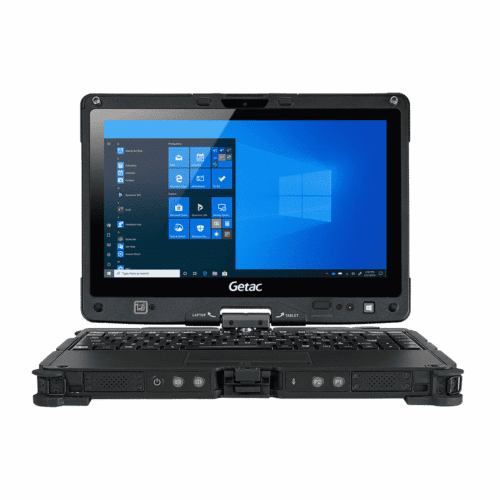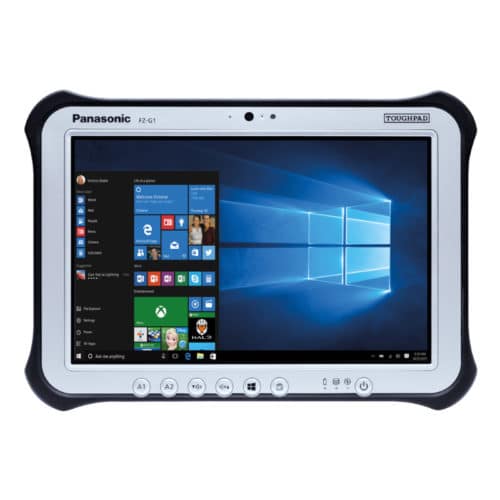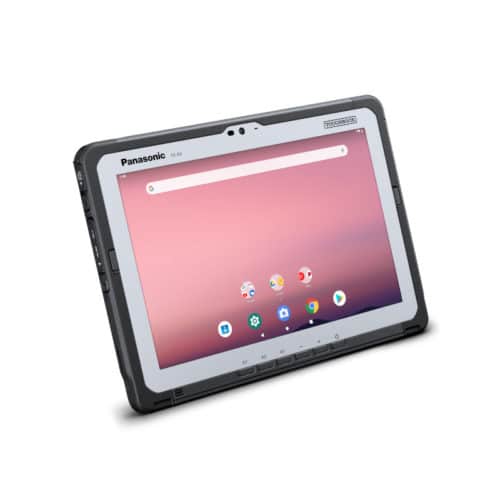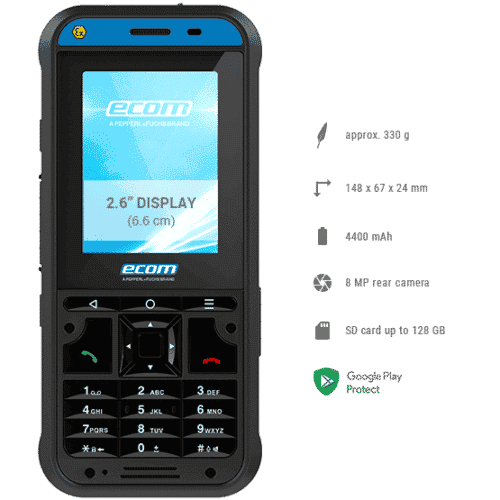CMMS: What characterizes modern maintenance management?
Perfect electrics and mechanics were long considered the measure of all things in maintenance. Meanwhile, it is not only the condition of the machines that matters. Increasing competitive pressure challenges companies to improve the efficiency of their workflows. At the same time, the complexity of legislation for operators is increasing. Maintenance managers are faced with the balancing act of having to ensure high safety requirements and reduce costs. Computerized Maintenance Management Systems (CMMS) are one way to manage it.
What is a CMMS?
CMMS is the abbreviation for Computerized Management System. The applications support all work processes of the Maintenance; from the planning of the assignment, through the execution of the work, to the documentation. By using CMMS, companies ensure legally compliant and safe maintenance without unnecessarily slowing down the process speed.
Sometimes the terms maintenance software or maintenance software are used synonymously with CMMS.
Application areas of Maintenance Software
The functional scope of CMMS may differ depending on the software. However, usually all or many of the following application areas are covered.
1. deployment planning
Spreadsheets have long been the tool of choice in mission planning. However, the plans quickly became confusing and – a major shortcoming – were not linked to other tools.
Modern CMMS software offers users an attractive graphical interface and simple usability: with just a few clicks, orders can be created and all information on the plant and maintenance can be linked. On digital planning boards, shift planners use drag & drop to assign employees to specific jobs.
Many previously manual processes are now automated, for example, it automatically displays how staffing changes affect budget and workload, and much of the email communication can be kept as comments in the CMMS.
2. organization and documentation of installations
All information about plants is stored in the CMMS system. Among other things, the overview contains information on the manufacturer, serial numbers, previous maintenance measures and costs, statistics on downtimes and performance.
When is the next maintenance due? In some cases, CMMS systems can automatically create work orders based on time, recent maintenance results, or customer notification.
Want to learn more about failure prevention? Read our expert article on the topic Smart Maintenance .
3. organization of work orders
Service technicians receive notification of the new job and can prepare using the CMMS application. They can see what tools and materials they need and order them from the application as needed. By linking material management with the CMMS, warehouse and product costs can be monitored and optimized.
CMMS also often replace analog driver logbooks. Instead of fiddling with pen and paper, the technician calls up the application on his smartphone and starts tracking his ride with one click. Everything else is done by the GPS.
Once at the plant operator’s site, technicians can access documentation and checklists via the CMMS platform. No need to carry folders or click through the depths of directories to view previous test results or important information. Some CMMSs even guide you step-by-step through testing processes by dealing with Head Mounted Displays and can be controlled by voice command.
If the data entries are transmitted to the platform in real time, employees in the company headquarters can see at any time what the progress of the work is and, if necessary, make last-minute changes to the plan.
Learn more about innovative solutions for the industry:
- Effective workflow management
- Maintenance plan : new technology meets efficiency
4. documentation and analysis
CMMS ensure seamless documentation of all maintenance processes. In this way, they also centralize data management. This opens up new opportunities for companies to analyze processes and identify potential for improvement.
But the analysis functions of CMMS are not only useful for internal process improvement. They also simplify the proof of certain business standards required for certifications and audits. At the touch of a button, companies can generate reports tailored specifically to audit requirements.
Advantages of a CMMS
The initial cost of industrial equipment is high. Therefore, every company strives to utilize the expected service life as much as possible and to do so with low downtimes. Above all, reliable operation has enormous business implications. After all, with every unplanned downtime, production comes to a standstill, sales are lost, and partners and customers may become disgruntled. If you want to achieve optimum output with minimized downtime, there is no getting around the use of CMMS software.
The digital platform centralizes and standardizes processes. It simplifies the communication of maintenance managers and technicians, but also with customers and business partners. This is because people with questions can obtain a lot of information themselves with just a few clicks and view the next steps in the CMMS – and usually from a smartphone, tablet or laptop, regardless of location. This transparency and clarity accelerate maintenance processes enormously.
Selection of the best industrial notebooks, tablets & smartphones
-

Getac V110, 11.6 inch, IP65, MIL-STD-810H, MIL-STD461G, Windows 10 Pro
€3.123,99excl. 20% VAT
zzgl. Shipping Costs
In den Warenkorb -

Panasonic FZ-G1, rugged tablet MIL-STD 810G, 10.1 inch HD display, IP65, Windows 10
€3.699,99excl. 20% VAT
zzgl. Shipping Costs
In den Warenkorb -

Panasonic Toughbook A3, rugged tablet, MIL-STD-810G, 10.1 inch, Android 9, 3 years warranty
Weiterlesen -

Getac S410, rugged notebook, GTX 1050, 1TB, 14 inch, Windows 10 Pro
€1.919,99excl. 20% VAT
zzgl. Shipping Costs
In den Warenkorb -

ecom Ex-Handy 10 DZ1, Ex-protected cell phone for ATEX Zone 1, 2.6″ touch screen, Android
€1.487,00excl. 20% VAT
zzgl. Shipping Costs
In den Warenkorb
However, maintenance software is not only worthwhile from a cost perspective. It relieves the workload on shift planners, who now have a better overview of jobs and priorities, and simplifies the day-to-day work of technicians, for example with one-click trip books, digital tool lists and step-by-step instructions. In short, it increases employee satisfaction, with all the positive effects this has on staff turnover and productivity.
Technician safety and corporate compliance also benefit from standardized digital workflows. Errors in maintenance can often be prevented on the software side because steps cannot be omitted. At the same time, agreements are recorded and activities and results are automatically documented in the background, so that processes can be fully traced in the event of liability issues.
11 Advantages of CMMS software at a glance
- Maximizing the value added from the investment
- Minimization of downtime
- Optimization of maintenance operations
- Real-time tracking of work progress
- Efficiency in communication and planning
- Standardized knowledge transfer
- Automation of processes in purchasing, warehousing and administration
- Simplification of the tasks of maintenance managers and technicians
- Increased security and compliance
- Advanced analyses
- Simplified quality management
5 recommendations for choosing the right CMMS system
Companies are spoiled for choice: Numerous providers advertise their maintenance software. Which is the best or right one can only be determined individually. However, we would like to give you some basic tips for your decision-making process.
SaaS platform
The trend towards the cloud also affects maintenance software. A significant advantage: companies save themselves high initial investments. With a SaaS CMMS solution, they use the provider’s hardware and can flexibly add server capacity as data volumes increase. The company’s own IT department, if present, is also relieved. This is because maintenance and administration of the platform is handled by the provider, who also takes care of solving technical problems. Most SaaS CMMS use a subscription model. In the process, companies benefit from updates and functional enhancements free of charge.
Connectivity
For the CMMS to develop its full potential, seamless integration into the existing IT infrastructure must be ensured. Interfaces to the ERP system, PLM and DMS should be available and compatible. To ensure that the application is easy to use for all employees on the move, make sure you know which mobile operating systems are supported.
Usability
It doesn’t matter how great the feature set and how powerful the software is if the interface is not easy for users to use. If extensive training is required and employees regularly have problems using it even afterwards and do not like using it, the realized benefits from the CMMS remain limited. Therefore, involve technicians and planners in the selection of software and tests – and do not leave this exclusively to IT managers.
Clear criteria and priorities
The third recommendation is strategic: Many CMMS platforms are functionally oversized and therefore disproportionately costly. Make sure you know in advance which functions you need and which are optional. Involve all stakeholders in this. Then compare providers and distribute points per criterion according to your satisfaction to make your decision on a more objective basis.
Need help choosing the best CMMS software? We will be glad to help you!
Get a callback now:
Extensive testing
Take the time to test the platform extensively before you buy. Reputable providers offer free trial access or periods. Play through the core operations and compare how many steps users take to achieve the desired goal. Again: Have employees from the different user groups test and include their feedback in the decision.
From trend to standard: augmented reality and maintenance software

If you want to maximize the productivity of your technicians, you should choose CMMS, the augmented reality (AR) support.
Employees can access digital checklists and instructions via Smart Glasses even easier to retrieve. They then do not have to interrupt their work to fill out checklists on the tablet, for example, but can call them up by voice command and read documents on their data glasses.
Some CMMS offer the possibility of Workflow Automation to be created with AR elements. Instead of describing next test steps in text form, they are visualized digitally via data glasses in the user’s field of vision.
If technicians do need face-to-face assistance, CMMS software with AR support delivers the benefit of being able to call experts by voice command and perform an assessment of the problem remotely via the data glasses. They see “through the eyes of the technician” and can guide him step by step through the problem solving process. This Remote maintenance is not feasible with the help of a tablet.
Read also:
- Remote Software : Realize professional remote maintenance with these 7 tools
In addition, AR functions can be integrated at many other points in the work process. However, in the field alone, technicians save money by using data goggles and AR Software up to one working hour per day. AR not only makes work execution more convenient for employees, but also brings a significant increase in productivity or a significant reduction in costs for companies.
Watch Workheld’s video to see how companies can use such digital applications to streamline their maintenance processes:
Future prospects and trends
CMMS are not a new development. The applications have been in use in many companies since the 1980s. However, the scope of maintenance software has changed massively in recent years.
Today, CMMSs are mobile, deeply integrated into the IT infrastructure, intuitive to use, and many times faster than maintenance software offered on the market fifteen, ten, or even five years ago.
Those who classify their maintenance management application as legacy software should urgently consider a change. Cost-efficient processes in maintenance are more important today than ever before in view of increasing competitive pressure. CMMSs play an important role in the search for new ways to bring human and machine safety, productive performance of the plants and costs into an economically optimal relationship.
The latest innovation in CMMS, following the introduction of cloud technology, is the integration of augmented reality. AR functions support many maintenance processes and can reduce labor costs – properly integrated – by around 20%. So far, the technology is not yet in widespread use. However, the rapid spread in recent years is likely to continue in the future. Alongside artificial intelligence and automation, AR is one of the major technology trends in Industry 4.0.
